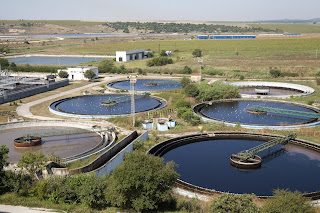An informative and educational resource specializing in process control instrumentation, analytical instruments, and related industrial equipment. Content includes technology basics, how-to's, new product developments, and application notes. Blog is courtesy of Alliance Technical Sales, a leading Manufacturers' Rep headquartered in Clarendon Hills, IL and serving customers in Illinois, Indiana, Iowa, Michigan and Wisconsin.
Showing posts with label sulfate. Show all posts
Showing posts with label sulfate. Show all posts
MCE Technology for Chloride and Sulfate Analyzers
Mettler Toldeo, under their Thornton brand, employs Microfluidic Capillary Electrophoresis in the on-line measurement of chlorides and sulfates. This measurement system delivers actionable measurements of these potentially harmful water constituents, enabling timely corrective action to be taken and prevent damage to turbines and other steam utilization equipment.
The MCE technology is currently available on Thornton's 3000CS Analyzer which provides on-line measurements every 45 minutes. The system reduces cost of ownership and provides faster results than methods requiring sampling and off-line processing.
Share your steam system and fluid analytical challenges with fluid process analytic specialists, combining your own knowledge and experience with their product application expertise to develop effective solutions.
Water Quality Analysis – Constituent Survey (Part 2)
 |
| Sewage treatment is but one area where water quality measurement is employed |
Continuing the examination of water quality monitoring in municipal and industrial processes, another key variable which requires monitoring for industrial water use is sulfate. Sulfate is a combination of sulfur and oxygen, salts of sulfuric acid. Similarly to chlorides, they can impact water utilization processes due to their capability for corrosion. The power generation industry is particularly attuned to the role of sulfates in their steam cycle, as should be any boiler operator. Minerals can concentrate in steam drums and accelerate corrosion. Thanks to advancements in monitoring technology, instruments are available which monitor for both chlorides (covered in the previous installment in this series) and sulfates with minimal supervision needed by the operator, ensuring accurate detection of constituent levels outside of an acceptable range. Ionic separation technologies precisely appraise the amount of sulfate ions in the stream, allowing for continuous evaluation and for corrective action to be taken early-on, avoiding expensive repairs and downtime.
Another substance worthy of measurement and monitoring in process water is sodium. Pure water production equipment, specifically cation exchange units, can be performance monitored with an online sodium analyzer. Output from the cation bed containing sodium, an indication of deteriorating performance, can be diverted and the bed regenerated. Steam production and power generation operations also benefit from sodium monitoring in an effort to combat corrosion in turbines, steam tubes, and other components. Sodium analyzers are very sensitive, able to detect trace levels.
Ammonia is comprised of nitrogen and hydrogen and, while colorless, carries a distinct odor. Industries such as agriculture utilize ammonia for fertilizing purposes, and many other specializations, including food processing, chemical synthesis, and metal finishing, utilize ammonia for their procedural and product-oriented needs. An essential understanding of ammonia, however, includes the fact that the chemical is deadly to many forms of aquatic life. Removing ammonia from industrial wastewater is a processing burden of many industries due to the environmental toxicity.
Methods for removing ammonia from wastewater include a biological treatment method called ‘conventional activated sludge’, aeration, sequencing batch reactor, and ion exchange. Several methods exist for in-line or sample based measurement of ammonia concentration in water. Each has particular procedures, dependencies, and limitations which must be considered for each application in order to put the most useful measurement method into operation.
As water is an essential part of almost every facet of human endeavor and the environment in which we all dwell, the study and application of related analytics is an important component of many water based processes. The variety of compounds which can be considered contaminants or harmful elements when dissolved or contained in water presents multiple challenges for engineers and process operators.
Alliance Technical Sales specializes in the instruments, equipment, and supplies utilized to analyze water and other liquids employed throughout commercial and industrial operations.
Chloride & Sulfate Process Analyzer
Determining the levels of chloride and sulfate in water is especially useful to power plant operators. Contamination of the power plant process water by chloride and sulfate leads to corrosion, pitting, and stress corrosion cracking in pressurized equipment and piping. The deposits that can result from contamination reduce heat transfer efficiency. Boilers and turbines suffer under the effects of excessive chloride and sulfate levels, so monitoring of their levels at critical locations in the steam system provides operators with actionable information that can be used to maintain efficiency and reduce maintenance demand.
Mettler Toledo, under their Thornton brand, provides a reliable and affordable analyzer for chloride and sulfate concentration in water. The video included with this post outlines the operational advantages of microfluidic capillary electrophoresis, the measuring technology employed in their system.
Share your on-line process analysis challenges with product application specialists, combining your own process knowledge and experience with their product application expertise to develop and effective solution.
Tags:
boiler,
chloride,
Illinois,
Indiana,
power plant,
process analyzer,
pure water,
steam,
sulfate
Subscribe to:
Comments (Atom)